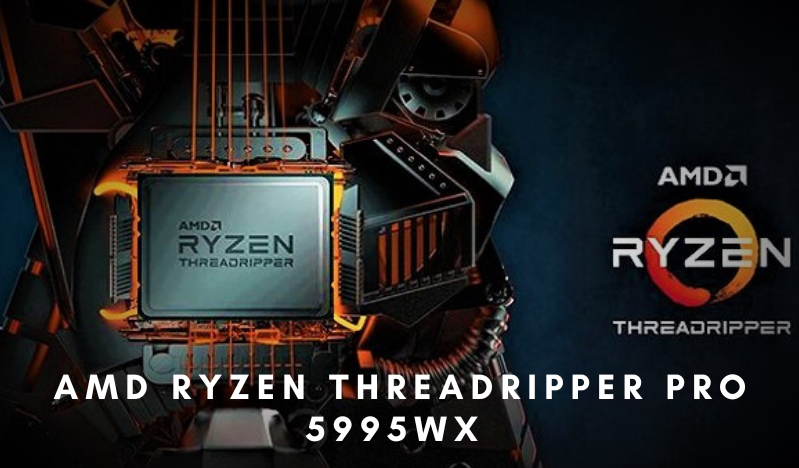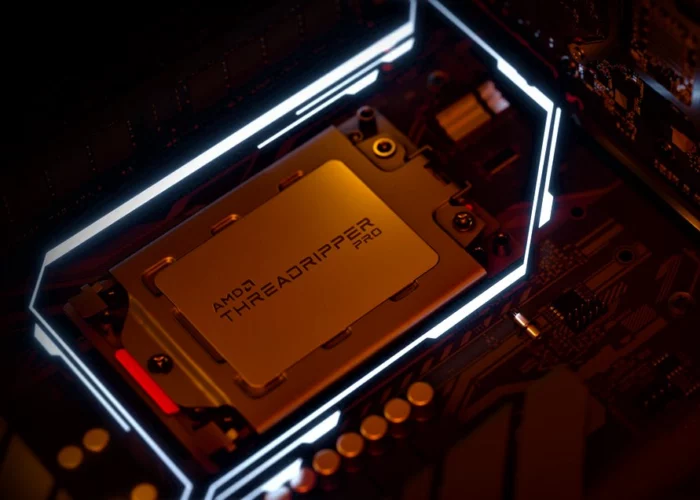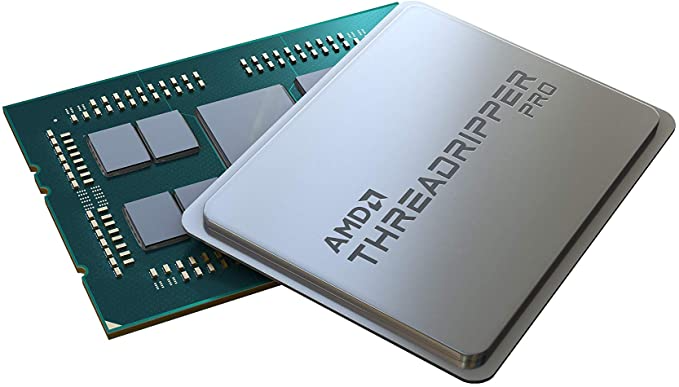The AMD Ryzen Threadripper PRO 5995WX remains a monumental piece of engineering, a processor that, even a few years after its debut, represents immense computational power. Designed explicitly for the most demanding professional workstations, its specifications are tailored for massive parallel workloads. This analysis provides a detailed look at the 5995WX in the current landscape, its architectural strengths, and its position relative to both its predecessors and successors.
This guide is a purely informational resource, intended to provide verified, objective data for professionals, researchers, and enterprise users evaluating their hardware options.
AMD Threadripper PRO 5000 WX-Series: At a Glance Comparison
To understand the 5995WX, it is helpful to view it in the context of its contemporaries and older generations. The following table outlines the key specifications of the processors discussed in this article.

| Feature | Ryzen Threadripper PRO 5995WX | Ryzen Threadripper PRO 5975WX | Ryzen Threadripper 3970X | Ryzen Threadripper PRO 3955WX | Ryzen Threadripper 2950X | Ryzen Threadripper 1900X |
| Status | Available (Legacy) | Available (Legacy) | Discontinued (Legacy) | Discontinued (Legacy) | Discontinued (Legacy) | Discontinued (Legacy) |
| CPU Cores | 64 | 32 | 32 | 16 | 16 | 8 |
| Threads | 128 | 64 | 64 | 32 | 32 | 16 |
| Base Clock | 2.7 GHz | 3.6 GHz | 3.7 GHz | 3.9 GHz | 3.5 GHz | 3.8 GHz |
| Max. Boost Clock | Up to 4.5 GHz | Up to 4.5 GHz | Up to 4.5 GHz | Up to 4.3 GHz | Up to 4.4 GHz | Up to 4.0 GHz |
| Total L3 Cache | 256MB | 128MB | 128MB | 64MB | 32MB | 16MB |
| Default TDP | 280W | 280W | 280W | 280W | 180W | 180W |
| CPU Socket | sWRX8 | sWRX8 | sTRX4 | sWRX8 | TR4 | TR4 |
| Platform Chipset | WRX80 | WRX80 | TRX40 | WRX80 | X399 | X399 |
| Memory Channels | 8-Channel DDR4 | 8-Channel DDR4 | 4-Channel DDR4 | 8-Channel DDR4 | 4-Channel DDR4 | 4-Channel DDR4 |
| PCIe Version | 4.0 | 4.0 | 4.0 | 4.0 | 3.0 | 3.0 |
| PCIe Lanes | 128 | 128 | 64 | 128 | 60 | 60 |
| Architecture | Zen 3 | Zen 3 | Zen 2 | Zen 2 | Zen+ | Zen |
In-Depth Review of the AMD Ryzen Threadripper PRO 5995WX
The 5995WX was the flagship of the “Chagall” generation, built to handle tasks that would bring consumer-grade systems to a standstill. Its design philosophy revolves around maximizing parallel processing capabilities.
Core Specifications and Architecture
Built on the proven TSMC 7nm FinFET process, the Threadripper PRO 5995WX is a testament to the efficiency of the Zen 3 architecture. Its core specifications are formidable:
- 64 Cores and 128 Threads: This massive core count is the processor’s defining feature, allowing for exceptional performance in highly multi-threaded applications.
- Clock Speeds: It operates at a base clock of 2.7 GHz and can reach a maximum boost clock of up to 4.5 GHz. The lower base clock is a necessary trade-off to manage the thermal output of its 64 cores within the 280W TDP.
- Cache Hierarchy: The CPU is equipped with a substantial 256MB of L3 cache, which is critical for feeding its numerous cores and minimizing data latency. This is complemented by 32MB of L2 cache and 4MB of L1 cache.
- Memory Support: It utilizes an 8-channel DDR4 memory interface, officially supporting speeds up to 3200MHz. This expansive memory bandwidth is essential for data-intensive tasks.
- Platform: The processor uses the sWRX8 socket and requires a motherboard based on the AMD WRX80 chipset.
Important Note: Overclocking is not enabled on the Ryzen Threadripper PRO 5995WX. These processors are designed for stability and reliability in mission-critical workstation environments.
Performance in Professional Workloads
The true value of the 5995WX is revealed in professional applications that can leverage its vast number of cores. It continues to be a powerhouse for:
- 3D Rendering and Animation: In rendering engines like Chaos V-Ray, Blender (Cycles), and Autodesk Arnold, the 64 cores can dramatically reduce render times for complex scenes, making it ideal for visual effects studios and architectural visualization firms.
- Scientific Computing and Simulation: Researchers and engineers running complex simulations in software like Ansys or MATLAB can significantly cut down on calculation times.
- High-Resolution Video Editing: While some aspects of video editing are frequency-dependent, tasks like encoding, transcoding, and rendering final 8K footage are heavily multi-threaded and benefit from the 5995WX.
- Software Compilation: Developers working on large-scale software projects will experience faster build times, as the compilation process can be heavily parallelized.
For professionals whose workflows are defined by these types of tasks, the 5995WX can still offer a compelling performance profile. If your work involves a lot of waiting for renders or simulations to complete, this CPU was designed to minimize that downtime. A deeper dive into how to manage computer components like the CPU can be found by understanding its temperature through a reliable CPU temp monitor.
Power Consumption and Thermal Management
With a Default TDP of 280W, the Threadripper PRO 5995WX is a power-intensive processor. It demands a robust cooling solution to maintain its boost clocks and ensure system stability under sustained load. High-performance air coolers can be used, but for optimal results, an All-in-One (AIO) liquid cooler or a custom water-cooling loop is strongly advised. Proper airflow within the PC case is also critical.
The State of the Threadripper Platform in 2025
While the 5995WX itself remains a capable processor, the platform it belongs to is now considered legacy. The introduction of newer technology has shifted the landscape for high-end desktop (HEDT) and workstation users.

The WRX80 Chipset and Motherboard Compatibility
It is crucial to understand that the Threadripper PRO 5995WX is not compatible with consumer-level motherboards like those with B550, X570, or similar chipsets. It requires a specialized sWRX8 socket and a motherboard built around the AMD WRX80 chipset.
These motherboards, produced by manufacturers like ASUS, Gigabyte, and ASRock, are designed for workstations. They feature robust power delivery systems, support for 8-channel ECC DDR4 memory, and an extensive array of PCIe 4.0 lanes to accommodate multiple GPUs, high-speed storage, and other expansion cards. For users considering this platform, understanding the role and function of a motherboard’s chipset is fundamental.
A Note on Gaming and Single-Core Performance
The AMD Ryzen Threadripper PRO 5995WX is not a gaming processor. While it can technically run games, its performance is often lower than contemporary consumer CPUs. Modern games typically favor higher clock speeds and lower latency over a massive number of cores. The architectural trade-offs made to accommodate 64 cores mean that its single-threaded performance, while respectable, cannot match CPUs designed specifically for gaming, such as AMD’s own Ryzen X3D series. Professionals who also engage in high-end gaming would be better served by a different platform or by understanding that gaming is a secondary, non-optimized function of this CPU. The concept of identifying the best CPU for your specific gaming needs is a more targeted approach for gamers.
Successor: The Ryzen Threadripper PRO 7000 WX-Series
The direct successor to the 5000 series is the AMD Ryzen Threadripper PRO 7000 WX-Series. These processors, based on the newer “Zen 4” architecture, introduce significant advancements:
- New sTR5 Socket: A new platform that unifies the HEDT and PRO lines.
- DDR5 Memory Support: Moves from 8-channel DDR4 to 8-channel DDR5, offering higher bandwidth.
- PCIe 5.0 Support: Provides the next generation of connectivity for GPUs and storage.
- Increased Core Counts: The flagship 7995WX pushes the core count to an incredible 96 cores and 192 threads.
For those seeking the absolute cutting edge in workstation performance, the 7000 WX-Series is the current-generation alternative.

Status of Older Threadripper Generations
The rapid pace of processor development means that older generations are quickly superseded. Here is the current status of the other processors listed in the original content.
AMD Ryzen Threadripper PRO 5975WX
As the 32-core counterpart to the 5995WX, the 5975WX occupies the same legacy but still-capable position. It uses the same sWRX8 socket and Zen 3 architecture, offering a balance of high core count and strong performance for users who don’t require the full 64 cores.
AMD Ryzen Threadripper 3970X
Discontinued. This 32-core Zen 2 processor was part of the non-PRO HEDT lineup on the sTRX4 socket. While powerful in its time, it has been surpassed by multiple generations. Users with this CPU may consider an upgrade depending on their needs, which could involve upgrading the motherboard as well.
AMD Ryzen Threadripper PRO 3955WX
Discontinued. This 16-core Zen 2 processor was the entry point to the previous PRO generation on the sWRX8 platform. It has been effectively replaced by higher-performing options in both the PRO and consumer spaces.
AMD Ryzen Threadripper 2950X
Discontinued. A 16-core Zen+ processor from a much older generation on the TR4 socket. Its performance is significantly outmatched by modern consumer-level CPUs.
AMD Ryzen Threadripper 1900X
Discontinued. The 8-core, first-generation Zen Threadripper is now a historical component. Modern Ryzen 7 consumer CPUs offer vastly superior performance.
Note on Pre-Built Systems
The original content mentioned a Dell Alienware Aurora Ryzen Edition R14. It is important to note that Alienware systems are gaming-focused desktops and have not typically incorporated Threadripper PRO processors. These systems utilize current-generation consumer CPUs from Intel and AMD. Workstation-class machines with Threadripper PRO CPUs are typically sourced from system integrators like Puget Systems or major OEMs like Lenovo (ThinkStation) and Dell (Precision).
Frequently Asked Questions (FAQ)
Is the AMD Ryzen Threadripper PRO 5995WX still a relevant processor?
For specific professional workloads like heavy 3D rendering, scientific simulation, and massive code compilation, the 5995WX remains a highly capable and relevant processor. However, for new system builds, the newer 7000 WX-series offers superior performance and a more modern platform with DDR5 and PCIe 5.0 support.
What is the primary use case for the Threadripper PRO 5995WX?
The primary use case is for professional workstations that run heavily multi-threaded applications where performance scales directly with the number of CPU cores. It is designed for content creators, data scientists, engineers, and researchers.
Can you use a regular consumer motherboard with the 5995WX?
No. The 5995WX requires a specialized motherboard with the sWRX8 socket and WRX80 chipset. Consumer motherboards (e.g., AM4, AM5) are physically and electronically incompatible. Correctly identifying your motherboard is crucial; you can learn how to find your motherboard model to ensure compatibility.
Is the Threadripper PRO 5995WX suitable for high-end gaming?
No, it is not recommended for gaming. While it can run games, its architecture is optimized for parallel professional tasks, not the high-frequency, low-latency demands of modern video games. Dedicated gaming CPUs will provide a superior experience. For gamers, understanding concepts like normal CPU temperature during gaming is more pertinent.
What is the key difference between the Threadripper PRO 5000 and 7000 series?
The key differences are the underlying architecture (“Zen 3” vs. “Zen 4”), the CPU socket (sWRX8 vs. sTR5), and platform features. The 7000 series supports newer, faster DDR5 memory and the next-generation PCIe 5.0 connectivity standard, offering a significant performance uplift and future-proofing.
Does the Thread ripper PRO 5995WX require liquid cooling?
While not strictly mandatory, liquid cooling is highly recommended. The 280W TDP means the processor generates significant heat under load. A high-performance AIO or custom water-cooling loop is the best way to ensure optimal performance and thermal stability, especially for users interested in complex setups like watercooling a GPU.

Holding a Ph.D. in Computer Science, Dr. Alistair Finch is our chief PC Component Benchmark Analyst. He provides meticulous, data-driven analysis of CPUs and GPUs, moving beyond marketing claims to reveal their true performance. His guides help readers understand the intricate relationship between hardware architecture and real-world gaming frame rates.
